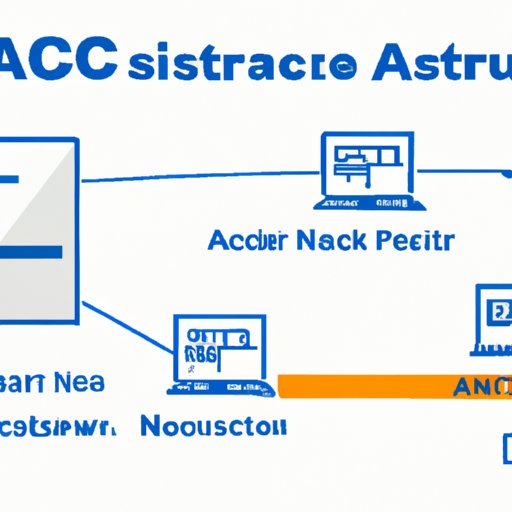Introduction
Network Access Control (NAC) technology is a type of security solution that enables organizations to control who or what can access their networks. NAC solutions are designed to protect the network from unauthorized access, malicious attacks, and other threats. This article will explore the basics of NAC technology, how it helps businesses secure their networks, and the future of NAC technology.

Exploring the Basics of NAC Technology
To understand what NAC technology is, it’s important to first understand the problem it solves. With the rise of the Internet of Things (IoT), organizations are increasingly connecting devices to their networks. This increases the number of potential attack vectors, making it difficult to keep networks secure. NAC technology is designed to address this issue by providing an extra layer of protection against unauthorized access and malicious attacks.
NAC solutions work by authenticating users and devices when they attempt to access the network. The authentication process typically involves verifying the user’s identity, as well as scanning the device for any potential vulnerabilities or malware. Once the authentication process is complete, the NAC solution will either grant or deny access to the network based on the results of the authentication.
In addition to authentication, NAC solutions also provide real-time monitoring of the network. This allows organizations to detect and respond to any suspicious activity on the network. NAC solutions can also be used to enforce policies and ensure compliance with industry standards and regulations, such as HIPAA and PCI DSS.
How NAC Helps Businesses Secure their Networks
The key benefit of NAC technology is its ability to enhance network security and compliance. By authenticating users and devices before they gain access to the network, NAC solutions can help organizations prevent unauthorized access and malicious attacks. In addition, NAC solutions provide real-time monitoring of the network, allowing organizations to quickly detect and respond to any suspicious activity.
NAC solutions also enable organizations to enforce policies and ensure compliance with industry standards and regulations. By setting up rules and policies, organizations can ensure that only authorized users and devices are allowed to access the network. This helps organizations maintain compliance with industry standards and regulations, such as HIPAA and PCI DSS.
However, there are some drawbacks to using NAC technology. For example, NAC solutions can be complex to set up and manage, and they can require a significant amount of time and resources. Additionally, NAC solutions can be expensive, and they may not be suitable for small businesses with limited budgets.

Examining the Future of Network Access Control with NAC Technology
The future of NAC technology looks promising. As organizations continue to adopt IoT devices, NAC solutions will become increasingly important for network security. Additionally, NAC solutions are becoming more sophisticated, with features such as machine learning and artificial intelligence being used to detect and respond to threats more quickly and accurately.
Another trend in NAC technology is the move towards cloud-based solutions. Cloud-based NAC solutions allow organizations to manage their networks from anywhere, without needing to deploy additional hardware or software. This makes NAC solutions more cost effective and easier to manage.
Finally, NAC technology is becoming more integrated with other security solutions, such as firewalls and intrusion detection systems. This allows organizations to create a comprehensive security strategy that covers all aspects of network security.
Conclusion
Network Access Control (NAC) technology is a powerful security solution that helps organizations control who or what can access their networks. It provides an extra layer of protection against unauthorized access and malicious attacks, while also enabling organizations to enforce policies and ensure compliance with industry standards and regulations. In addition, NAC solutions are becoming more sophisticated, with features such as machine learning and cloud-based solutions being used to better protect networks. As organizations continue to adopt IoT devices, NAC solutions will become increasingly important for network security.
(Note: Is this article not meeting your expectations? Do you have knowledge or insights to share? Unlock new opportunities and expand your reach by joining our authors team. Click Registration to join us and share your expertise with our readers.)
